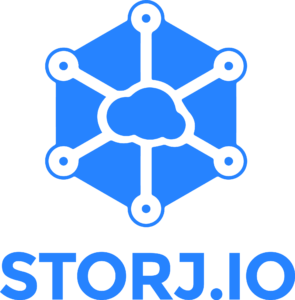 I’ve been exploring blockchain technology lately. In this post I’ll share what I’ve learned so far. I should point out that my interest is squarely on how blockchain can be applied to solving business problems–I’m less interested in cryptocurrency.
I’ve been exploring blockchain technology lately. In this post I’ll share what I’ve learned so far. I should point out that my interest is squarely on how blockchain can be applied to solving business problems–I’m less interested in cryptocurrency.
Blockchain: A Brief Intro
A blockchain, as the name suggests, is a linked chain of blocks. Each block contains arbitrary data and a link to the previous block. Because these links are created using cryptographic hashes, blocks are hard to alter. The chain is continuously growing. Transactions run which add new blocks, and those transactions are validated by other servers before they are accepted into the chain.
So a blockchain is like a database, but instead of running on a central server controlled by a single entity, the blockchain is distributed across many servers, and, depending on which blockchain you are talking about, the blocks in the chain may be visible to the public.
The reason blockchain is often referred to in the context of cryptocurrency is because cryptocurrencies use a blockchain as a distributed ledger to track cryptocurrency trades. But that is only one of many possible use cases.
Wrapping up this brief intro, realize there is no single blockchain. You can run your own private blockchain internally. Or, you could set up a private blockchain between your company and your partners. Or, you could leverage one of the public blockchain networks. It really depends on exactly what you are trying to do.
For more on the origins of blockchain, see The Wired Guide to the Blockchain.
Use Cases
To identify problems that are good candidates for blockchain applications it helps to summarize the technology’s most noteworthy characteristics:
- Data blocks are immutable. Once added to the chain they can never be changed. This will lend itself to problems where we need to retain the data for a long time or where we need to ensure that once created, the data does not change. Currency trades have already been mentioned, but you can easily come up with other examples such as health records, vehicle service records, government documents, or electronic votes.
- Distributed/No single point of control. The distributed nature of the blockchain is attractive for multiple reasons. First, there is no single point of failure. If a server goes down or a company goes out of business, the chain is still intact and functional. Second, the data is automatically made available to every node in the network. This means you don’t have to solve data sync or replication–it just happens.
- Transparency. In a public blockchain, every block is visible to everyone. Some of the data might be encrypted or hard to make sense of out-of-context, but you can inspect it, if you want.
- Trustworthiness. I’ve already mentioned the difficulty in hacking the data. Another aspect of trustworthiness is about making sure that any logic that runs as part of the blockchain runs the same way every time. Yes, that logic could contain bugs, backdoors, or bad actors doing nefarious things, but the blockchain guarantees that it will always execute the same way every time.
Here’s a simple example that leverages all of these strengths. Suppose we decide to start a temperature prediction market in which participants try to predict the temperature in a given city on some date months into the future. We could store the prediction (predicted temperature, city, date, user) on the blockchain as well as the actual daily temperature readings.
We’re capturing data and that data is distributed across the network, which is cool, but we can also store logic on the blockchain–some implementations call these “smart contracts”, but they are really just scripts. In this example, when an actual temperature reading is saved the script will determine winners and losers by comparing the actual temp with the predictions.
If we wanted to add a reward mechanism to our prediction market, a prediction could have an associated wager amount. The smart contract would then not only be responsible for tracking the predictions that came true, but could also move funds from losers to winners, all without any middleman to make sure that happens.
This example takes advantage of the strengths of blockchain:
- Once a prediction is made or an actual temperature reading is captured it cannot be changed (immutability).
- If a server shuts down the actual readings can still be captured, predictions can be validated, and wagers can be paid (distributed).
- If someone wants to make sure their prediction was captured correctly, they can inspect the block (transparency).
- And, finally, no intermediary is needed to pay off the bet–the contract is guaranteed to be executed as written when the conditions that trigger it are met (trustworthiness).
A Developer’s Perspective
I wanted to experiment with some of these concepts on my own, so I started with Ethereum. Ethereum is an open source blockchain platform. You may have heard of people trading a cryptocurrency called Ether (ETH). You can use the same Ethereum platform to develop and run your own distributed applications (“dapps”) regardless of whether or not they are related to cryptocurrency.
Ethereum developers use a command line tool called geth to perform tasks with their Ethereum nodes and a tool called Solidity to compile JavaScript into smart contracts.
To try this out I spun up an Ubuntu server, installed geth and Solidity, then worked through the Greeter example. It’s not very exciting–Greeter is essentially a hello world example. But, it does help you understand what it takes to start up a local test network and to write and compile smart contracts.
One of the immediate learnings is that transactions on Ethereum cost money (called “gas”). Even if you are running a test network, you must first mine enough Ether on your test network before you can run a transaction. On the live network, the cost of running a transaction goes to the miners who are running servers that are busy validating transactions and updating the blockchain.
Another gotcha for me was that your miner has to keep working while you deploy your smart contract. It makes sense now–the smart contract is stored on the blockchain and therefore it must be validated like any other transaction, but it was definitely not clear to me while working through the tutorial.
Ethereum was definitely interesting, but I was looking for something a little more business-oriented. That’s when I found Hyperledger Fabric.
Hyperledger is an umbrella open source project that includes several blockchain related sub-projects. One of those is called Fabric, which, like Ethereum, is a blockchain implementation, but Fabric has some features that make it more attractive to businesses, such as a modular architecture and the ability to assign permissions to data and smart contracts.
Another very attractive sub-project is Hyperledger Composer. Composer is a set of tools that abstract away some of the nitty-gritty details related to creating and managing smart contracts (called “chaincode” in Hyperledger parlance).
The easiest way to try Fabric and Composer is the IBM Blockchain Platform Playground Tutorial (IBM Is a major contributor to the Hyperledger project). This is essentially a quick intro that you work through in your web browser.
The Playground Tutorial is worth it to get exposed to the concepts, but I wanted to run everything locally. You can do that easily with Docker. IBM’s Developer Tutorial walks you through setup and then takes you through a very simple “commodity trading” example. This tutorial is just a little deeper than the Playground, but at least you are running everything in containers running on your machine.
Finally, I came across J Steven Perry’s Hyperledger tutorial on developerWorks. This three part tutorial was awesome. You essentially build a “perishable goods business network” that models how contracts, shipments, and payments work with growers, shippers, and importers. By the time you are done, you’ve got GPS and temperature sensors sending data to the blockchain, chaincode that is looking at the contract and sensor data to determine how much stakeholders should get paid based on contract terms, and a RESTful API that you can call to make the whole thing work.
This tutorial really highlights how a Hyperledger solution can be used to share data between business partners in a distributed fashion while ensuring that only relevant operations and data are exposed depending on stakeholder role.
The developer-friendly tooling also flattened the learning curve significantly when compared to my out-of-the-box experience with Ethereum. I’m not saying one platform is inherently better than the other–it depends on what you are trying to do. I just felt much more productive with Hyperledger Fabric and Composer.
Tangential Topics
As I was exploring blockchain I went down a few interesting “bunny trails” here and there. Rather than go into details, I’ll just provide links in case any of it looks interesting:
- IBM Blockchain Developer Center. Lots of quality learning resources.
- Evernym. A startup focused on digital identity.
- Sovrin. A foundation focused on self-sovereign identity and decentralized trust.
- Hyperledger Indy. A distributed ledger specifically designed for handling identity.
- IPFS. Decentralized object storage that some say could replace the way we reference objects today using HTTP.
- Juan Benet TEDx San Francisco talk on IPFS
- Filecoin. Take IPFS and add monetization to incentivize disk space farmers. Similar to storj.io.
- Ethereum White Paper.
- Proof of Work.
- Hashcash Algorithm.
Summary
I’m really glad I took the time to dig into blockchain. The hype is definitely at a fever pitch. They say blockchain engineers are in high demand right now. I suspect that one day we’ll all have blockchain in our toolbox, selecting it to be part of our solutions when it make sense, just like we do with any other technology.
Photo Credit: Chain, by Astro, CC-BY 2.0

